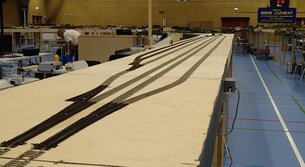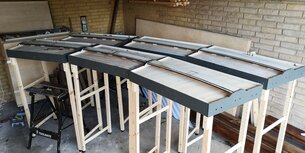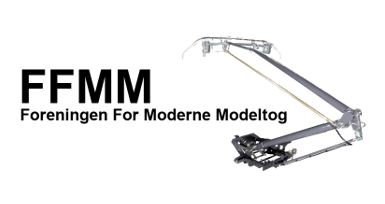Modules
Why modules?
A module is transportable, can be built at the home of the individual member and can be included in one's home system.
In addition, they can be built into larger communal facilities in the company of other like-minded people. This also means that building premises is not an obstacle, such as columns or several interconnected spaces.
By using FREMO's standard for building modules, this process becomes even easier. In the standardization, FREMO has clarified;
- that all end profiles must be equipped with a common drillhole below the track
- that since the track is always over a drillhole, according to the norm, modules can be assembled regardless of whether they are single or double-track and regardless of the end profile
- that station modules can have other constructions than section modules, as long as the end profile must be able to be assembled with ordinary section modules
- that industrial modules, where the track often runs along the outer edge, to allow for more industrial construction, can also be assembled with ordinary section modules
The module profile is available in many different versions; flat landscape, mountain landscape, intersection, staggered height at double track .. There are many possibilities.
Most often, however, you should stick a little to the geographical area you, and perhaps your circle of friends, build from. This means that the individual sections can be built without the major landscape breaks.
At stations and fiddleyards (fictitious terminals without landscape and buildings) a standard end profile is often used at the beginning and end of the station. Between these, what we call station modules with flat profiles are used in a large numbers. Then you can be frolic with tracks without having to take into account hills or depressions. These can then be built in afterwards.
The module itself
The typical straight module is 100 cm long and 50 cm (single track) / 54.5 cm (double track) wide.
But it is possible to make modules both shorter and longer. Often we need shorter modules, very often in the form of curve modules that may only have 2-3 degrees - 2-3 degrees does not sound like much, but if it is followed by an 8-10 straight stretch, it means a lot.




